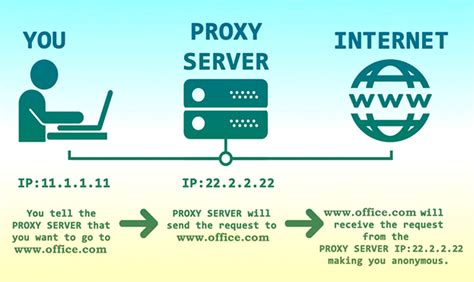What is Internet Proxy

The internet proxy, a fundamental component in the realm of computer networking, serves as an intermediary between a client and a server. Essentially, when a client, such as a web browser, sends a request to access a certain resource on the internet, the request is first routed through the proxy server. The proxy server then evaluates the request, possibly modifying it, before forwarding it to the destination server. This process allows for a layer of abstraction and control over the interaction between the client and theserver, offering a range of benefits including anonymity, caching, content filtering, and improved network performance.
Basic Functionality
At its core, a proxy server operates by standing between the client’s request and the target server. Here’s a simplified breakdown of how this works:
- Client Request: A user on a client device (like a laptop) requests to access a website.
- Proxy Engagement: Instead of the request going directly to the website’s server, it is diverted to a proxy server.
- Proxy Evaluation: The proxy server examines the request. This examination can involve filtering or modifying the request based on predefined rules.
- Request Forwarding: The proxy server, possibly after altering the request, forwards it to the intended server.
- Server Response: The destination server processes the request and sends a response back to the proxy server.
- Response Forwarding: The proxy server receives the response and may modify it before sending it back to the client.
- Client Receipt: The client receives the response, which appears to have come directly from the destination server.
Types of Proxies
Proxies can be categorized based on their functionality, location, or the level of anonymity they provide. Some of the common types include:
- HTTP Proxies: Specifically designed for HTTP requests, these proxies are commonly used for web browsing.
- SOCKS Proxies: These proxies can handle any type of internet traffic, including HTTP, FTP, and POP3.
- Transparent Proxies: These proxies do not modify the request or response and are often used for caching.
- Anonymous Proxies: Designed to hide the client’s IP address, providing a level of anonymity.
- Reverse Proxies: Situated in front of a server, these proxies can help with load balancing, caching, and protecting the server from attacks.
Benefits
The use of internet proxies offers several advantages:
- Anonymity: By hiding the client’s IP address, proxies can help protect privacy and reduce the risk of being tracked.
- Caching: Proxies can cache frequently accessed resources, reducing the time it takes to access them and lowering the bandwidth usage.
- Content Filtering: Proxies can be configured to block access to certain websites or content, useful in corporate or educational environments.
- Security: Proxies can act as a buffer against malware and other threats by scanning incoming data.
- Geolocation Spoofing: Some proxies can make it appear as though the client is accessing the internet from a different location, which can be useful for accessing region-restricted content.
Challenges and Considerations
While proxies offer many benefits, there are also challenges and considerations:
- Speed: The addition of a proxy can introduce latency, slowing down internet access.
- Security Risks: Using an untrusted proxy can expose the client to security risks, as the proxy has access to all the data being transmitted.
- Configuration: Setting up and managing a proxy can be complex, especially for those without technical expertise.
In conclusion, internet proxies are powerful tools that can enhance privacy, security, and the overall browsing experience. However, their use requires a balanced understanding of their capabilities and limitations to maximize their benefits while minimizing potential drawbacks.



